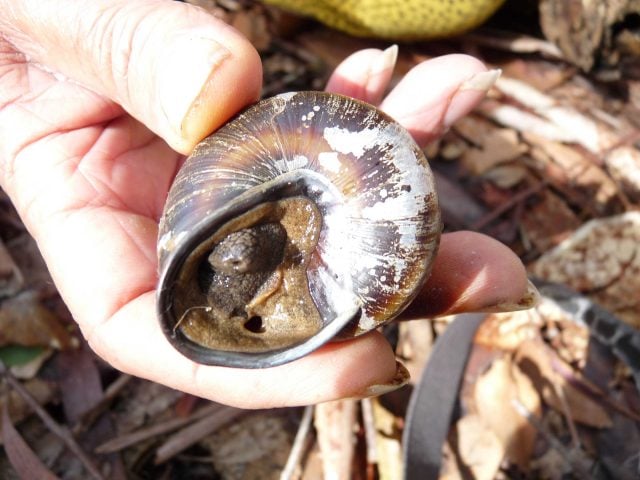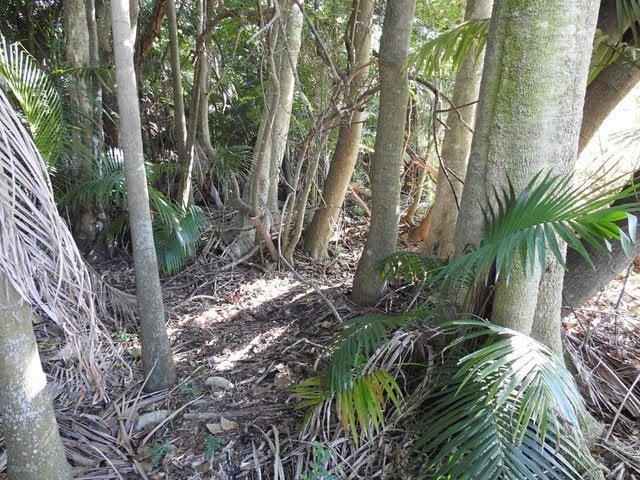Jan Barham
Byron Shire’s proud history of requiring developers to deliver high standards for biodiversity assessment is undermined by Council’s biobanking approval for the Byron bypass. It’s unprecedented for Byron Shire Council (BSC) to choose a planning pathway favoured by developers that limits scientific and community scrutiny. By choosing biobanking, Council is at odds with ecologists and conservationists who oppose this method of assessing biodiversity destruction. It operates by allowing offsite compensation, ‘offsets’, in the form of biobanks to replace the lost environment.
The first rule of biodiversity management is to ‘avoid and minimise’ destruction; avoid is the only genuine biodiversity protection.
Request to Council for rainforest survey

The bypass is proceeding without adequate environmental impact assessment. As a Council project, residents have trusted that it would be done to the highest Byron standards. That’s not the case. Two weeks ago I requested Council permission for an independent flora survey of the area, identified as rainforest and core habitat for the critically endangered Mitchell’s Rainforest snail. This vegetation wasn’t surveyed for the approval.
Unfortunately, Council has declined the request.
Choosing biobanking
Over the last three months I’ve sought answers from Council and the Office of Environment & Heritage (OEH) regarding inconsistencies in the bypass-approval process. I’ve researched the Council agendas. It’s clear that councillors and the community were unaware that there was a choice not to use biobanking.
The staff report to Council on 8 October 2015 states, ‘The project team (with advice from GHD) are using biobanking for the Byron Bay Bypass project. It is less time consuming and costly to undertake than the traditional Part 5A assessment.’ The reason: it’s not as thorough, open, and transparent, and it reduces the community scrutiny.
The ‘traditional’ (Part 5A) process, requires a detailed Species Impact Statement that can be scientifically challenged and peer reviewed and provides for community scrutiny.
Owing to concerns with the bypass biodiversity issues, Tamara Smith MP and I commissioned local ecologist David Milledge to review the biodiversity-assessment process.
I advised the 18 April Council meeting of concerns with the biodiversity assessment based on an initial review of the Biobanking Agreement by Mr Milledge.
His reviews question the rigour of the process and have stated, ‘because the lowland rainforest is not included in the offsets for the development, this compromises the claim of the OEH approval to ‘improve and maintain; biodiversity values and adds to the question of its validity.’
On 8 May, Tamara Smith MP raised the bypass biodiversity concerns in the NSW Parliament.
At the Council meeting of 23 May, I requested Council defer issuing the contract to allow further investigation of biodiversity concerns raised by Mr Milledge. They proceeded regardless.
A mayoral minute supporting additional biodiversity enhancement for the bypass was supported. The proposed independent flora survey will provide the scientific basis to ensure that Council and the community are fully aware of the values of the wetland prior to destruction.
Much of the project detail was not included in the Environmental Impact Statement (EIS) or DA. The JRPP and court determined that 10 management plans for works, including acid-sulfate soils, groundwater, excavation and construction impacts are required to be approved by Council prior to construction. It’s unlikely that they will be made public.
A 1998 Environmental Impact Statement (EIS) prepared for a Byron bypass considered several options, including rejecting the current approved route. The preferred route was within the rail corridor. The EIS Conclusion report states: ‘Given the number of potentially endangered and vulnerable species in the locality, the alignment of the proposal is adjacent to the railway line. This minimises the removal of vegetation…’
Biodiversity Extinction Crisis
It’s bizarre that 20 years ago it was deemed that the current route was unacceptable owing to the impacts on biodiversity, but not today. The recent UN Biodiversity Report and NSW State of the Environment Report identified that we are in an extinction crisis.
Independent survey of rainforest
A new survey is needed prior to destruction. The community deserves to know the ecological value of what will be destroyed for the bypass.
An area that is designated as rainforest on BSC’s own mapping was excluded from assessment and will be destroyed. The biobanking rules identify it as too small to be assessed. Council and OEH are confident that they have met the rules. There is a strong case that disputes this. Also, Council did not seek approval from the Commonwealth under the EPBC Act for impacting on the critically endangered snail despite its being a species identified as being ‘unable to withstand further loss’ of habitat.
Oversight of project
In the past, major projects were overseen by committees with councillor and community representatives. The previous council delegated all power to the staff to design and manage the bypass project. The government’s election offer of $10m has meant that the project is proceeding.
Threshold issue for Byron
The bypass biodiversity assessment is a threshold issue for the values and ethics of Byron Shire. If this project does not receive additional scrutiny and assessment now, we will be limited in requiring higher standards from developers. The standard you accept is the standard that will be used in the future; that’s how the courts interpret ‘acceptable’ standards and how precedents are set.
This is not good enough for Byron Shire, the second most biodiverse area in Australia.
BYRON DESERVES BETTER
Is Byron a leader?
Trust, ethics, transparency, and accountability are sadly missing from the world of politics today but are still possible in Byron Shire if we, the community, demand it. Commitment to the protection of biodiversity is a priority, now more than ever. Is Byron Shire leading? Or have our historical standards that protected our biodiversity been diminished by the controversial bypass process and a lack of duty of care?
Greens support
My Greens colleagues, Tamara Smith MP, former MLCs Ian Cohen and Dawn Walker, and former councillors Richard Staples, Duncan Dey, and Tom Tabart support these findings and David Milledge’s advice.
Community
Many individuals and groups including Byron Environment Centre, Byron Residents Group, Butler Street Community Network, Byron Extinction Rebellion, and Fast Buck$ also recognise failings in the bypass proposal.
PLEASE CONTACT COUNCILLORS
Dear community, if you love Byron, as we do, please ACT NOW. Contact your councillors (not Cate Coorey or Basil Cameron, who have strongly opposed the bypass) and call on them to allow greater transparency regarding the biodiversity destruction they are undertaking in our name.
Love, Jan
♦ Echo Publications decided to print this article on its merit.
It first appeared in the Byron Shire Echo on July 17, 2019 as a paid advertisement.
Read Part 2
Bypass Biodiversity Destruction Part 2 – ACT NOW
Former mayor Jan Barham explains the increasing community concern that ecological values may have been overlooked in the bypass environmental assessment process.





Spot on Jan,
The bypass construction is a travesty to the environment
Again, we, the Community, have to do our elected representatives work!
Thankyou Jan. Further detailed information and history that is damning to our current Green Councillors.
The ‘modern’ Greens seem to be living in some parallel universe where there is no Extinction Crisis occurring.
Remember, the last Byron Shire election ? Only three years ago ?
The result showed the passion of the local constituents when our environment and community were threatened by a Council that wasn’t listening. They were flogged at the poles!
If the current crop of Greens can’t hear the Community screaming at them to do what they were elected to do, then they are NOT fit to hold their positions and should resign!
Jan Barham speaking:
In my days at the helm as Byron Shire mayor there was plenty of proud history of requiring developers to deliver high standards for biodiversity assessment. That standard is now undermined by Council’s biobanking approval for the Byron bypass. It’s unprecedented for Byron Shire Council (BSC) to choose a planning pathway favoured by developers limiting scientific and community scrutiny. By choosing biobanking Council now is at odds with ecologists and conservationists who oppose this method of assessing biodiversity destruction. The operation of biobanking allows offsite compensation, ‘offsets’, in the form of biobanks to replace the lost environment.
Biodiversity management’s first rule is to ‘avoid and minimise’ destruction. To avoid destruction is the only genuine biodiversity protection.
Sorry folks but western society or its concept has no regard for the balance of nature. Take for example the car. Even a somewhat conscious human trying to do the right thing will drive a car maybe 20000 kilometres a year. In 2 years they could have driven around the world. Imagine a billion humans driving around the world every 2 years. It conjures visions of a plague of locust. We need to stop, just stop. Sit more(meditate), move less. Be happy with less.